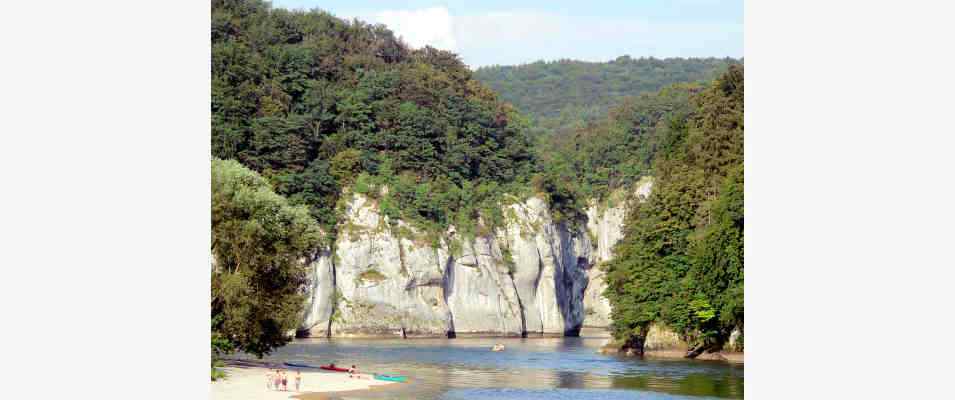
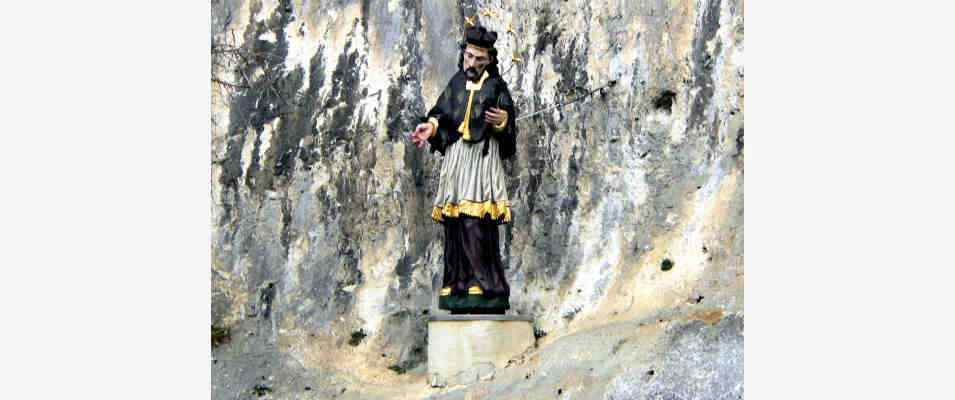
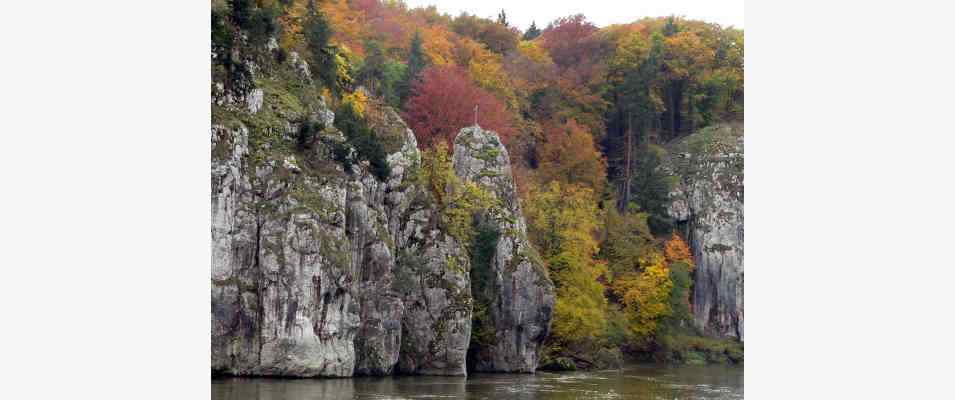
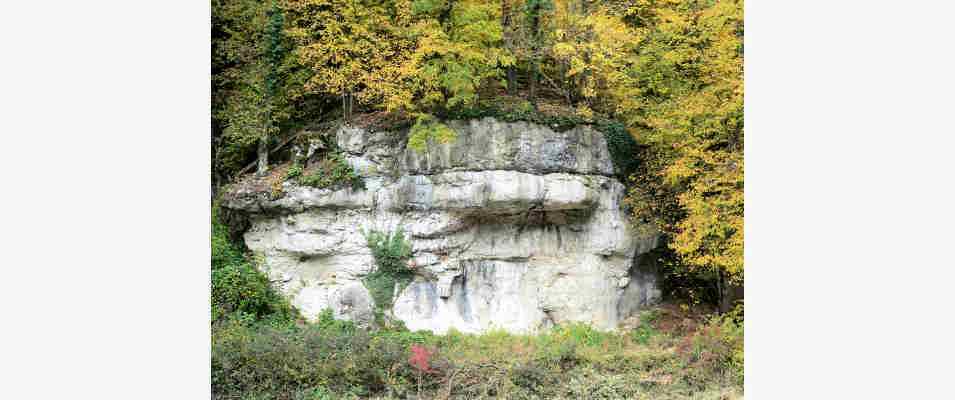

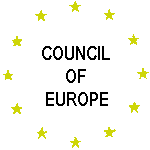
The Danube Aperture
between Kelheim and Weltenburg in the national park Altmuehl valley
In the central regions of Africa, Dr. Hironimus, a renowned explorer, encountered a traveller, and he asked his counterpart: "Which place do you consider the most beautiful spot on earth?" The answer was: "For me the most beautiful spot on earth is in Germany, precisely in the heart of Bavaria. Certainly you don´t know the place; it´s the Danube Valley between Weltenburg and Kelheim". Dr. Hironimus was delighted and said: "How well I know that! Only a few miles south of it, there is my home town, Abensberg".
The aperture near Weltenburg is Germany´s most remarkable valley breaking through a mountain barrier, and it is a most important part of the national preserved areas of Bavaria.
A number of favourable factors have come together to create something absolutely unique:
the elementary force of nature
the unequalled ensemble of water, rock, and forest
the abundance of very rare plants and animals
the number of evidences of man´s activities since the dawn of history
the most harmonious combination of natural growth and artifacts
The area around the Danube valley has attracted people since days of yore. In the nearby Altmuehl valley ![]() , excavators found the skeleton of a cave-dweller who had lived 50,000 years ago. At exactly the same place, one of the oldest works of art in Germany was found: a palm-sized piece of ivory with the carved picture of a mammoth
, excavators found the skeleton of a cave-dweller who had lived 50,000 years ago. At exactly the same place, one of the oldest works of art in Germany was found: a palm-sized piece of ivory with the carved picture of a mammoth ![]() .
.
It is certified that the valley has had inhabitants since the Stone Age. In the neolithic age there were lively human activities on the Arzberg ("ore hill") which rises above Weltenburg Abbey ![]() .
.
When bronze was replaced by iron as the material of tools and weapons, an important epoch began for this area, for there was iron in the forests in the shape of bog-iron ore and meadowore. The Celts proved to be good miners, and they built a kind of early industrial area behind stupendous mounds. Traces of the Celtic surface and underground constructions are to he found everywhere. In the forests there are tumuli and Celtic quadrilateral entrenchments. It was here where the "Weltenburg bullock", a Celtic bronze figurine, was found.
Not far from here, the Romans built their castle Abusina ![]() , the foundation walls of which we can still see today. And from this place the Limes, a rampart marking the boundary of the Roman Empire, ran to the river Rhine.
, the foundation walls of which we can still see today. And from this place the Limes, a rampart marking the boundary of the Roman Empire, ran to the river Rhine.
Near the narrowest part of the valley, there is the oldest abbey of Bavaria, and it looks as if it were mounting guard at the valley. Weltenburg was founded in A. D. 600.
Whoever has visited Weltenburg will come back. He won´t forget the mighty buildings on the gravelled bend of the river. He won´t forget the cooling drink of stout under the old shadowy trees in the convent-garden. And he won´t forget the magnificent abbey church in which the sculpture of St. George seems to be alive and in which a portrait of the constructor, Cosmas Damian Asam, seems to welcome the visitor. And he won´t forget the picturesque scenery on the banks of the Danube.
On the gravel-covered banks of the river there are a number of fishing-boats lying at anchor. Their prows enterprisingly point to the middle of the river. A little downstream there is a shining motor-boat.
You may embark where you like.
Very slowly the boat begins to move and swims to where the river narrows. The boatman perfectly handles the long pole of his punt, the helmsman steers the boat over the whirlpools. It is a pity you can´t see the fish in the depths: carp, pike, huck, trout, perch-pike, tench, barbel, eel, grig, whitebait, grayling, umber, whiting, dace, roach.
But you can watch what is flying over the water or lingering on the banks: the seesawing wagtail, the scolding kingfisher, the hovering buzzard, the dashing seagull.
When we come near the narrows, the boatsman tells about the rock formations which have been shaped by wind and weather in the course of many millenia. These rocks have been given funny names by waggish, humorous people.
The "kitchen rock" is like a perpendicular wall rising from the water. The "Bavarian Lion" is incessantly staring upstream. When the boat moves along, you can see the "bishop´s mitre" the "kissing pair", the "uncouth man" who turns his back on you and on the river, and then the "Roman´s rock". Here the story goes that the Romans had spanned a leather bridge across the river. After that we come to the "silent wall" and "long wall", where the river bends off to the left and makes you believe it is a gorge and gully with no way out.
The rocky walls soar 40 metres into the air and shove the waves into a river-bed of only 110 metres. On the "long wall" there are a number of massive iron rings. Boatmen used to tow their skiffs upstream by means of these rings.
A niche in the rocky wall harbours the life-size statue of St.Nepomuk, the patron saint of fresh-water navigators and bridge builders.
The slopes are covered by mixed forests comprising fir-trees, red-beeches, larch-trees, oaks, spruce-firs, maple-trees, pines, yews, hornbeams, willows, hazels, ash-trees, asps.
In autumn the leaves of the beeches will glow in gold and orange colours between the dark coniferous trees and the white lime-stone. Equally fascinating is the picture of a yew-tree, many centuries old, producing poison and no resin, scaling off red pieces of bark, bearing blackish green needles and coral-red sham berries. The flowers in the forest and on the rocks have no equals.
When we move on, three dome-shaped peaks appear - the "Three Brothers of Stone" ![]() . A "giant lizard" forces its way up a rocky ridge. The "flight to Egypt" can be seen. Then there is a huge "beehouse", a hollow rock with numerous holes shaped like honey-combs. On one side there are "Peter and Paul", on the other "Napoleon on the flight", and the Liberation Hall
. A "giant lizard" forces its way up a rocky ridge. The "flight to Egypt" can be seen. Then there is a huge "beehouse", a hollow rock with numerous holes shaped like honey-combs. On one side there are "Peter and Paul", on the other "Napoleon on the flight", and the Liberation Hall ![]() dedicated to the fight against Napoleon is seen on the height.
dedicated to the fight against Napoleon is seen on the height.
After passing "little monastery", a former hermitage, the last rock formations are "robber´s rock", "robber´s cave", "Napoleon´s travelling trunk", and "Nuremberg´s gate"
back to the Homepage of the town Kelheim ![]()
Zuletzt aktualisiert am 10.02.2017